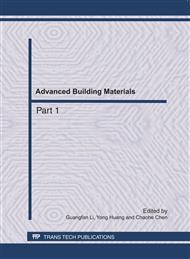p.2558
p.2562
p.2566
p.2571
p.2575
p.2583
p.2588
p.2592
p.2601
Practical Method for the Pile Composite Ground under Flexible Foundation Based on Super-Substructure Interaction
Abstract:
The technology of the composite ground under a flexible foundation have been widely used in transportation, water conservancy and other departments, yet its theory of characterizing the behavior of the composite ground needs to be further researched. A simplified analytical model is presented, considering the above four parts which includes the flexible foundation, the cushion, the composite ground, and the underlying soils as an interactive system, allowing for the relative movement between piles and soils, and assuming different settlement of foundation soil at the same elevation. The force equilibriums of a typical element are established. And then, according to the compatibility of stress and deformation on the interfaces between these four components, the formulas on settlement and stress ratio of pile-soil, which is used to characterize the behavior of the composite ground, are derived.
Info:
Periodical:
Pages:
2575-2582
Citation:
Online since:
May 2011
Authors:
Price:
Сopyright:
© 2011 Trans Tech Publications Ltd. All Rights Reserved
Share:
Citation:


